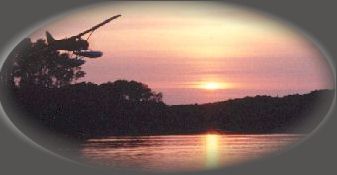
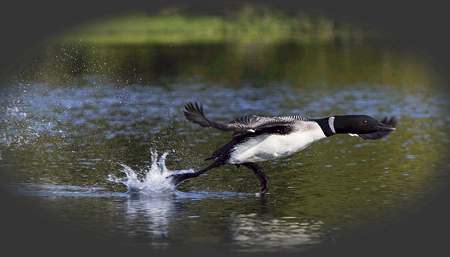
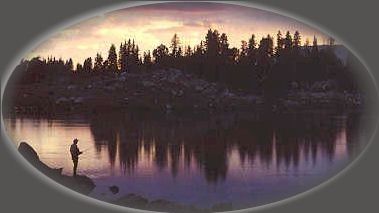
"wilderness ecoventures Ontario Canada canoe trips wildlife viewing remote wilderness fly-in trips" Canadian ecoventures fishing
1 888 603-0442 WWW.ECOVENTURES.COM Send us Email
Canadian Airventures offers exciting remote wilderness adventures for all outdoor enthusiasts into remote forest/lake/river areas,
along secluded trails, and pristine forestlands that abound with wildlife, flora / fauna & clean fresh air! Back to our Home Page



"Loon cleared for take-off" >>>Watch It Now<<<

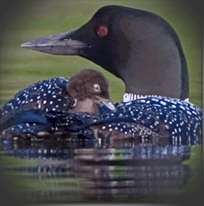
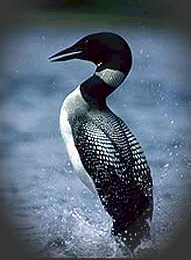
CHAPLEAU Ontario is the " Gateway to the World's Largest Game Preserve " Healthy forests, lakes, rivers & streams, wildlife, birdlife, plant life & let's not forget; mosquitoes/black flies etc ... consider CHAPLEAU, as home. This nature Mecca is not area specific, since CHAPLEAU sits smack-dab in the middle of this fascinating wilderness. Canadian Airventures is privileged, to have the expertise and resources available, so that all outdoor enthusiasts can personally savor these wonders. Climb aboard our venerable bushplane, enjoy a 'bird's eye' view en route to our facilities. Once on terra ferma, take a slow deep breath; the mysterious call of a loon and other wild bird chatter will set the tone for a truly unforgettable encounter with Mother Nature.
click here for >>>>>>> Canadian Fishing Trips
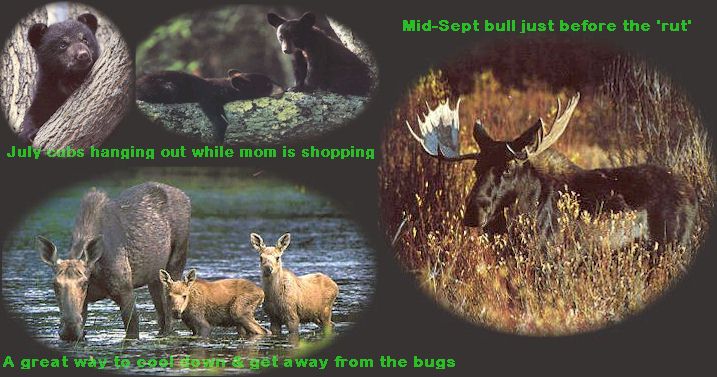
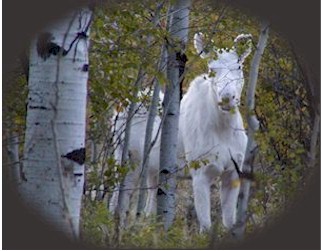
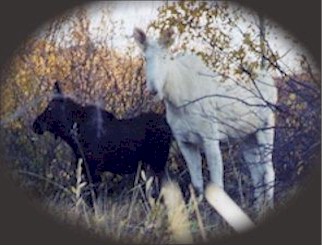
George Theriault Sr., one of Chapleau's first eco-wilderness bushpilot/pioneers summed it up best ..."Trespassing in God's Country!" Plan your own eco-encounter or join our staff naturalist for a day &/or overnight outing. Absorb the surroundings from a canoe, motor boat or pontoon deck. Hike the maze of game and nature trails discretely marked for your convenience. Blend in from up in one of our wildlife viewing stations. Or fly-in with your equipment and explore one of the numerous outback canoe routes ... www.canoeventures.com
![]()
Call now ! ... we can tailor full accommodation packages (full week/short week) for a party of 2, or for groups of up to 24.
Our outdoor specialists will equip you with all that is required, enabling you to
explore the wilderness mecca that surrounds our remote Lodge facility
Rates: please click >>> A/P Lodge for pricing info. Ecoventure guests can also join our staff naturalist on a 2 day guided
ecoventure, which is also included with full week ecoventure packages.
Toll free: 1 888 603-0442 Send us Email



Description - This common loon has a large, heavy body with a thick and pointed black bill. In the breeding season the plumage, head and neck are black with white bands on the neck and white spots on the back; in the winter the crown, hind neck and upper parts dark gray and the throat and under parts are white. The call of the loon, which occurs usually at night and during migration, is a loud, wailing laugh or a mournful yodel and has been described as "one of the most striking wilderness sounds, a strange, sad, mournful, unearthly cry, half laughing, half wailing".
Distribution - The loon breeds throughout northern and central Canada, from Aleutian Islands and Alaska, south to New Hampshire, Montana, and California. Loons nest on forested lakes and rivers and winter on coastal bays and oceans south to the Gulf Coast. Loons also breed as far north as Iceland. The fresh water lakes surrounding the Chapleau area, attract thousands of breeding pairs and young non-breeding flocks.
Biology - Loons are expert divers whose eyes can focus both in water and in air. They concentrate oxygen in their leg muscles to sustain them while diving to depths of up to 200 feet. Nearly solid bones make them heavier than many other birds.
![]()
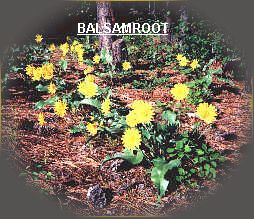
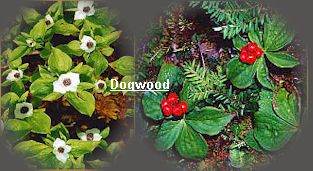
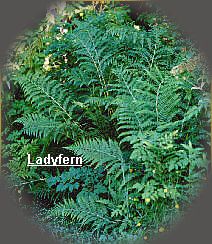
Moose
Alces alces
Description- This
horse-sized animal is the largest member of the deer family with long, dark
brown hair, high, humped shoulders and long legs. A pendant of hair-covered skin
sometimes reaching 2 feet hangs under the throat. Each April the male moose or
bull grows a set of antlers reaching 120-150 cm which he loses in the winter
after rutting season.
Distribution - The moose occurs in spruce forests, swamps, aspen and willow thickets; it is built to live in rough country and is well adapted to a cold climate. Chapleau boasts one of the healthiest moose populations in Canada
Biology - The rut lasts from early September to late October and 8 months later 1-2 calves are born. Moose are unpredictable and sometimes dangerous; although they generally avoid human contact, cows with calves and rutting bulls have been known to charge people, cars, horses and locomotives.
Tracks - The moose track is slightly larger and more pointed than that of the elk and similar in shape to a deer's but twice as large. The track may be blunted if the ground is rocky and hard, making it more difficult to distinguish from the elks. A typical print is of two pointed pear shapes with the tips closer than the wider bottom.
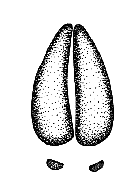
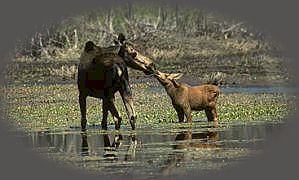

![]()
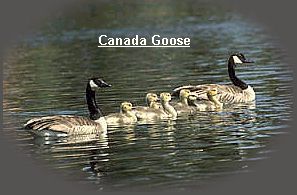
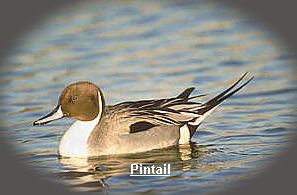
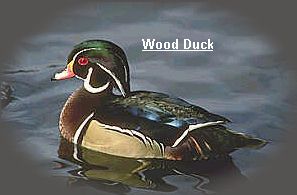
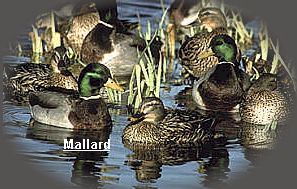

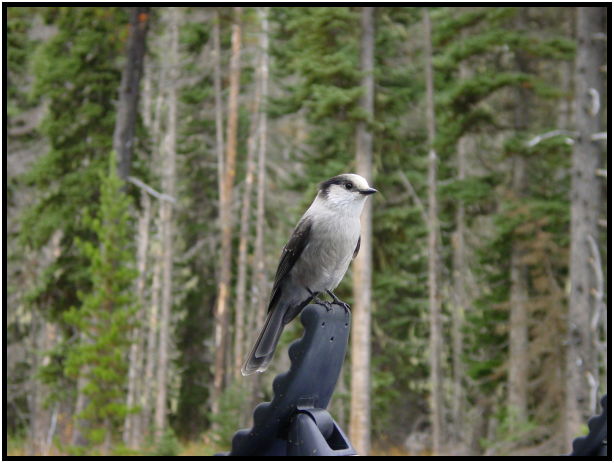

Description - The Grey Jay, also known as the Canada Jay or Whiskey Jack, is grey above and whitish below; the forehead and throat are white and the nape and stripe through the eye is a dull black. Younger birds are a sooty-grey. They have a "whee-ah, chuck-chuck" call and scold, scream and whistle. Also nick-named Forest Ghost and Camp Robber
Distribution - The Grey Jay (Canada Jay - Whiskey Jack) is resident from Alaska east across Canada in coniferous forests. Also know as the Camp Robber, this playful rascal is a frequent visitor to campsites and summer cottages, and can be easily fed by hand or bird feeding station once you become acquainted. This fine feathered friend makes his home in the wilderness areas that surround Chapleau.
Biology - Being omnivorous, the Grey Jay feeds on meat, fruit, insects and various vegetable substances. They are attracted to campsites where they appropriate as much food as possible; with its saliva it glues meat, suet and/or hide into balls and hides it among pine needles. It lays 3-5 grey-green eggs in a solid bowl-like nest made of twigs and bark strips, lined with feathers and fur.
![]()
Black Bear
Ursus americanus
Description
- Typical coloration in the Chapleau area is black to the occasional cinnamon
. A trade-mark with black bears in this area, is white blaze on the chest. The
snout is tan or grizzled with a straight or slightly convex profile. Average
weight is 200-600 pounds.
Distribution - The black bear inhabits heavily forested areas, dense bush and wooded mountains throughout most of the Chapleau area; but they have been known to wander a great distance, some male adults having lifetime ranges of 500 to 620 square miles.
CHAPLEAU is recognized as the "Bear Capital of Ontario!"
Biology - 1 to 3 (4-5 have been recorded) cubs are born in January to early February generally every second year. The young weigh only one-half a pound at birth. This uniquely North American bear is generally nocturnal and solitary. It is classed as a carnivore although most of its diet consists of vegetation such as twigs, buds, leaves, nuts, roots, various fruits, corn and berries. They are also good fisherman and feed on spawning salmon. Before winter it puts on a great supply of fat, then holes up for the winter in a sheltered place.
Tracks
The tracks of this slightly pigeon-toed creature are characterized by the
overlapping of the hind prints onto those of the front. The heel pad of the rear
foot is long and vaguely resembles that of a human. Five toes with equally long
claws are evenly spaced along the top of this pad.
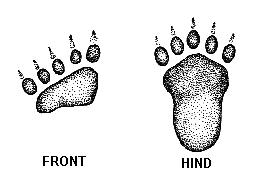
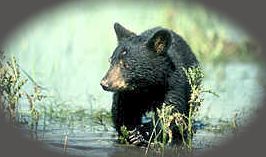
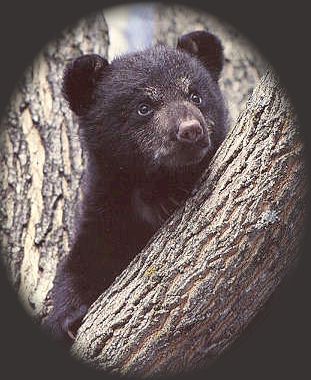
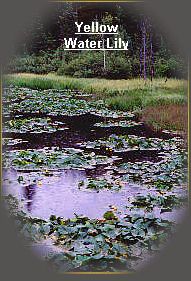
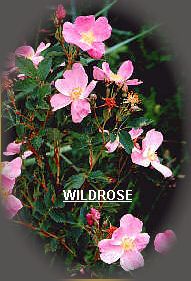
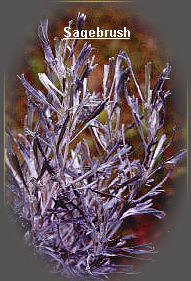
![]()
Grey Wolf Canis lupus or Timberwolf
Description - Generally the wolf is a grizzled gray but color varies from white to black. The ears are erect and the tail is bushy and black tipped. The male is larger than the female and average weight is 55-130 pounds.
Distribution - The wolf generally prefers open tundra and forests. The CHAPLEAU area enjoys the presence of a great number of wolves, due mainly to a healthy moose population and a wide variety of other smaller game. Although they once inhabited most of North America, now distribution occurs in only Alaska, Canada, and parts of the U.S.A. Human fear, superstition, and outright hatred of this animal decreased its population drastically and eradicated it from 50% of its former range.
Biology - The wolf is a very social animal who mates for life and lives in packs of 2-15. The strongest male is usually the pack leader; all members of the pack care for the young which helps unite the pack. An average of 7 pups are born to each female in April-June. Usually hunting at night, they feed primarily on large mammals by chasing down their victims either slashing tendons or driving it back to waiting pack members. Even though they kill only to survive, studies show that wolves can play a key role in decreasing the number of ungulates, sometimes beyond the rate of replacement, in any given area. The wolf's only important predator is man.
Tracks - This animal
generally travels in packs. During the snowy winter months they tend to follow
the trail made by the leader to conserve energy. The front foot is larger than
the rear and the toes are often splayed particularly in soft ground. The front
foot track is rounded with four toes with the claws evident and the heel pad
having a inverted V-shape, whereas the rear is slightly more oval with a
triangular shaped pad.
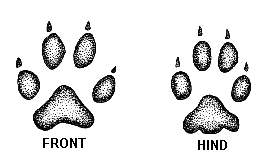
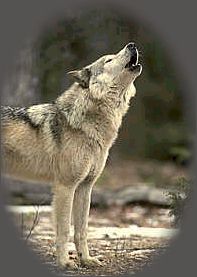
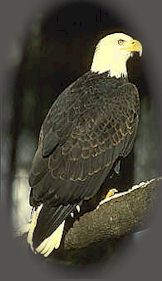
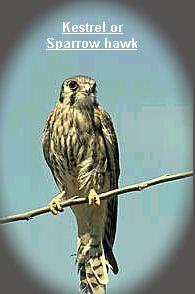
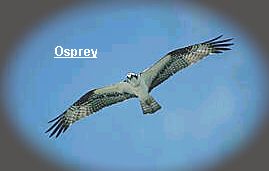
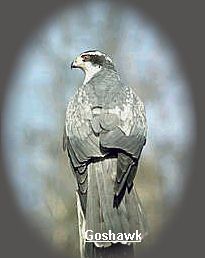
![]()
Lynx
Felus lynx
Description - The
coloring of a lynx is buff or tawny with mixed blackish hairs and the under
parts are cinnamon-brownish. The tail is short and tipped with black; ears have
long black tufts and cheeks have long pale ruffs which form a pointed beard at
the throat. The feet are very large and well furred. Average weight is from 10
to 40 pounds.
Distribution - Lynx are found throughout Canada, and in the boreal forests around CHAPLEAU, they frequent new growth areas where rabbits, partridge and other game abound. Although other prey are eaten, lynx depend heavily on snowshoe hares to thrive. As a result, the lynx populations fluctuate with cycles of the snowshoe hare.
Biology - Males are often more than five times heavier than the average domestic cat, although size can vary considerably. It is a sturdy looking animal set on solid looking legs, a rear noticeably longer than the front, with large paws, a fairly small head, and a very short tail. Female lynx usually bear 2 kittens in May-July who remain with her throughout their first winter. They make their dens in hollow trees, tangled thickets and under logs, stumps and fallen timber. Their large, thickly furred feet allow them to stalk their prey silently and give them better speed through soft snow where other animals may flounder, though not the Snowshoe Hare which is the lynx's chief prey. A chief characteristic is their 9-10 year cycle of peaking which parallels that of the snowshoe hare. The lynx lives as long as 12-13 years; the chief factor of death is lack of nutrition. Man, who values its long, silky fur, the wolf are its main predators.
Tracks - The lynx resides mainly in snowy country and has therefore adapted to this climate. The feet are heavily furred making the tracks appear rounded and obscuring the toe prints. The tracks are larger than that of a bobcat and similar to a mountain lions although the lynx doesn't sink as deeply into the snow.
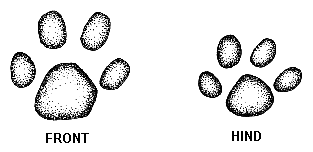
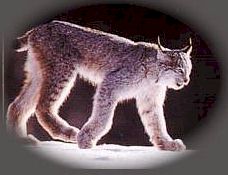
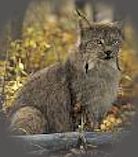
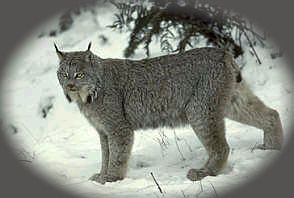
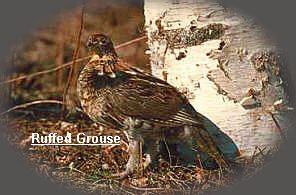
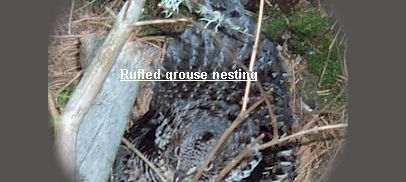
![]()
Bobcat Felis rufus or Wildcat
Description
- The color of the bobcat is tawny (grayer in the winter) with indistinct
black spotting. The tail is short and stubby with 2 or 3 black bars with a black
tip above and pale or white below. The face has broken black lines which radiate
onto the broad cheek ruff. Average weight is 15-70 pounds with the male being
larger than the female.
Distribution - The bobcat primarily occurs in scrubby country and broken forests, but adapts to swamps, farmlands and arid lands if they are rocky or brushy. They are spottily distributed from coast to coast throughout southern Canada with sightings in the CHAPLEAU area as well.
Biology - The litter ranges from 1-7 young who are born late April to early May. A second litter in one year is not uncommon. It is an excellent climber who often waits in the trees to pounce on their prey which includes rodents, hares, squirrels and birds; they also may take the occasional deer. Larger prey is cached and revisited. Predators of the bobcat include cougars, coyotes, wolves and humans, who use their fur for trim.
Tracks - The bobcat track is easily distinguished with a round shape, four toes and no claws evident. It is generally twice the size of a domestic cat's print and loosely resembles that of a coyote or dog but is more rounded. At greater speeds the toes of the front foot spread easier than that of the hind one which has a smaller ball pad.
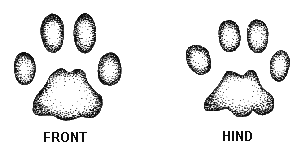
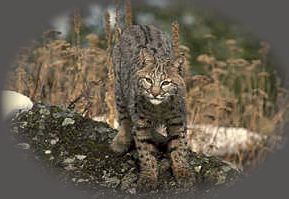
![]()
Porcupine Erethizon dorsatum
Description - This robust rodent usually weighs around 22 pounds. Its blunt-nosed face has small eyes, and small, round ears. The legs are powerful with long curved claws making it slow-footed and strong. The front half of the body is covered in long guard hairs which are a yellowish color in the west and black or brown in the east. The rump and tail are covered in over 30,000 quills which are 1-2.5 inches in length and set with tiny, scale like barbs.
Distribution - The porcupine makes his home throughout Canada, and is found in most of Ontario. The porcupine adapts well to the boreal forests that surround CHAPLEAU
Biology - Mating habits of this creature are rather bizarre; the male approaches the female with embraces and nose-rubbing, if receptive, she allows him to spray her with gouts of urine. When fully soaked copulation occurs and 210 days later one offspring is born, sighted, mobile and covered in hair and quills. The porcupine feeds on leaves, twigs and green plants and has a ravenous appetite for salt (it will chew on any salt stained tools or clothes it comes across) and also it relishes plywood because of the glue between the layers. Predators include the fisher (mainly), the mountain lion, bobcat, the wolf and coyote.
Tracks - The tracks of the porcupine are easily distinguished with pigeon-toed prints and a trough formed by the dragging of their feet between. The tail quills leave a pattern on the ground between these prints which closely resemble the marks of a corn broom on dirt. An oval shaped print with marks ahead from the long claws is characteristic.
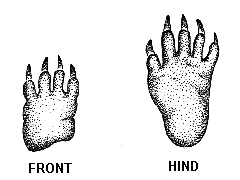
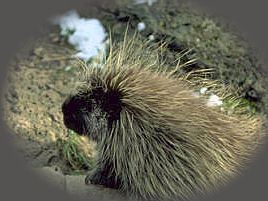
![]()
Striped Skunk Mephitis mephitis
Description - The size of this noxious odored creature is similar to that of a housecat. It has a small, black head with a white stripe between the eyes and two broad white stripes which meet at the shoulders of its black back. The tail is black with a white tip or fringe.
Distribution - The skunk prefers the desert, woodlands, grassy plains and suburbs. It occurs throughout the interior and southern tier of Canadian provinces and all of America.
Biology - The unique characteristic of the skunk is its ability to spray a fetid, oily, yellowish musk 10-15 inches. This fluid in the eyes causes intense pain and a fleeting loss of vision. Ammonia or tomato juice are best to remove the odor. The pelt is not highly valuable but the musk, once the odor is removed, is used as a perfume base because of its clinging quality. The skunk is an omnivore who feeds on a wide variety of vegetable matter, insects and grubs, small mammals, the eggs of ground nesting birds and amphibians. In mid-May 4-7 young are born. Although they do not hibernate, during the lean winter months they may become temporarily dormant. The Striped Skunk is the prime carrier of rabies. Its chief predator is the Great Horned Owl.
Tracks - The skunk leaves a distinct pattern which is easily identified. The smaller front feet are pigeon-toed and placed just ahead of the larger rear feet while in motion. This five-toed creature has long claws which are usually evident in the print.
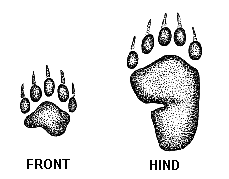
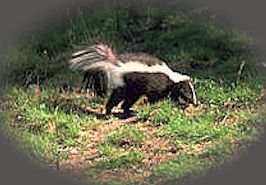
![]()
Red Fox Vulpes vulpes
Description - This small, doglike animal is rusty-red with white under parts, chin and throat. The ears are prominent and the tail is long and bushy with a white tip. Backs of the ears, lower legs and the feet are black. The fox goes through color phases of black, silver, and mixed.
Distribution - The red fox prefers the edges of forests, tilled fields and near marshes but they can be found on farmland, beaches, prairies, woodlands and both alpine and arctic tundra. They thrive throughout most of Ontario, with a healthy population in & around CHAPLEAU..
Biology - After a 51-53 day gestation period, up to 10 kits are born. Because of its well-developed sense of hearing, sight, and smell the red fox is an efficient and lethal predator; being an omnivore it eats whatever is available including corn, berries, apples, grasses, birds and mammals. The fox has many enemies including coyote, lynx, and humans. It is also susceptible to rabies.
Tracks
- The trail of the red fox generally follows fence lines and the edges of
forests and fields in a straight line but this line may vary depending on the
animals speed and gait. The print is usually smaller, longer and narrower than
that of a dogs. The front print is wider and larger than the pointed hind print.
The heel pad is an inverted V-shape with a unique calloused ridge across the
center of the pad.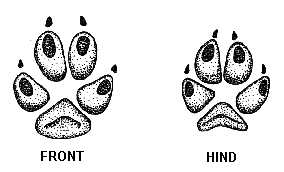
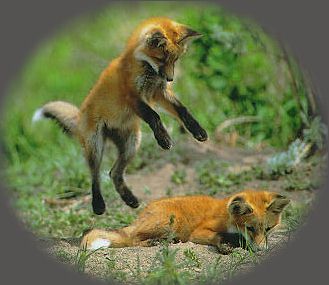
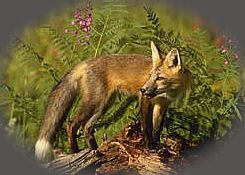
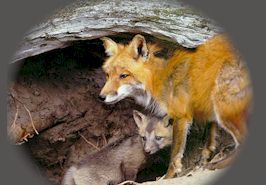
![]()
Raccoon Procyon lotor
Description - The raccoon is a reddish-brown above and black or grayish below. The most prominent characteristics are the bushy tail with 4-6 black or brown rings and the black mask outlined in white. The ears are small and the feet and forepaws are dexterous.
Distribution - This animal is native to the southern part of the Canadian provinces and most of the United States. It is most common along stream edges, open forests and coastal marshes.Biology - The raccoon inhabits hollow trees and logs for homes and often use the ground burrows of other animals for raising their young or for sleeping during the coldest part of the winter months. An average of 4-5 young are born in April-May; the mother at first carries them by the nape of the neck like a cat; they are weaned by late summer. Omnivorous, it feeds on grapes, nuts, grubs, crickets, small mammals, birds' eggs and nestlings. Often seen washing their food, the raccoon is actually feeling for matter that should be rejected as the wetting of the paws enhances its sense of feel. Winter is the raccoons greatest enemy when food is scarce.
Tracks - The tracks of this animal are paired, having one rear foot beside one front one. The raccoon has five toes and usually the claw marks are evident in the print. The hind foot makes a print in which the toes and heel pad are joined whereas the front tracks toe and heel pad have a brief space between. The print vaguely resembles that of a miniature bear.
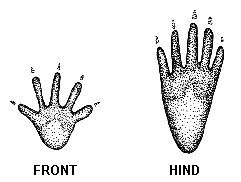
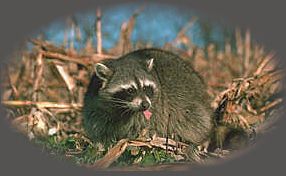
![]()
Chipmunk Eutamias minimus
Description - The color of this animal varies from muted yellowish-gray above with tan dark stripes to brownish-gray with black side stripes. The striped continue to the base of the tail; the sides are generally an orange-brown; the belly grayish-white. The tail is long and light brown above, yellowish below with long, black-tipped hairs. Average weight is 1-3 ounces.
Distribution - This is the most widely occurring species in Canada. It prefers sagebrush deserts, pastures, piney woods, rocky cliffs, and open coniferous forests.
Biology - A litter of 5-7 young are born in May in a nest either underground or in a tree. Main foods include acorns, seeds, fruits, berries and grasses and to a lesser extent fungi invertebrates and small vertebrates. The chipmunk is vulnerable to every carnivore from the weasel to the black bear. Its call is distinctive and is recognized by a series of high-pitched chipping notes.
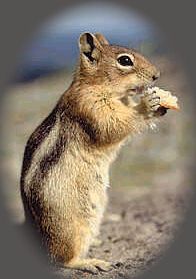
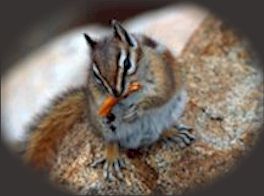
![]()
Red Squirrel
Tamiasciurus hudsonicus or Pine Squirrel, Chickaree
Description - This squirrel is rust-red to grayish-red above being brightest on the sides, white or grayish-white below and the tail is similar to the back color but is outlined with a broad, black band edged in white. The coat is duller in the summer and a black line separated the back and underbelly colors. The average red squirrel weighs 7-12 ounces.
Distribution - The red squirrel is abundant in any kind of forest, coniferous, pine, mixed boreal or hardwood forests, often around buildings. They occur through much of Canada and most of Ontario.
Biology - This creature feeds heavily on pine seeds and in the fall it cuts green cones and buries them in damp earth ; other sustenance includes nuts, seeds, birds' eggs, young birds and fungi. It makes a nest of leaves in a hollow or fallen tree, hole in the ground or tree crotch. 3-7 young are born in March or April and there is sometimes a second litter in August or September. The squirrel is a chatterbox with a variety of calls to announce its home range or the presence of intruders.
Tracks - Tracks are common between trees and near holes in the ground where they have dug up buried cones. Squirrels place their feet next to each other rather than one in front of the other. In deep snow their tracks are characterized by two diamond shapes next to one another. A clear imprint will reveal five long toes with claws similar to the skeleton of a human hand and may or may not have a heel print. The heel is as long again as the toes and a rough oval shape.
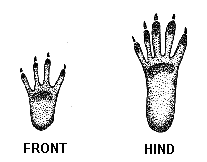
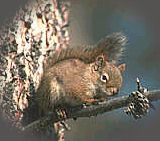
Web site designed & maintained by DenVal
![]()
This page is remains under construction ... thank you for your patience.
![]()
<p title=" fly in lodge Ontario | fly-in fishing outpost cabins Ontario | trophy walleye northern pike smallmouth fishing |Denis Ladouceur |Ontario hunting fishing regulations | canoe trips | wilderness ecoventures | best Canadian fishing | | trophy fishing lodge Ontario Canada | air service in Canada |" align="left"><font size=+2> </font>